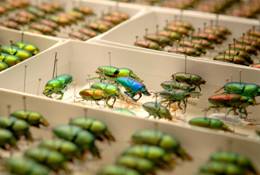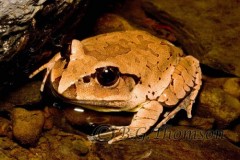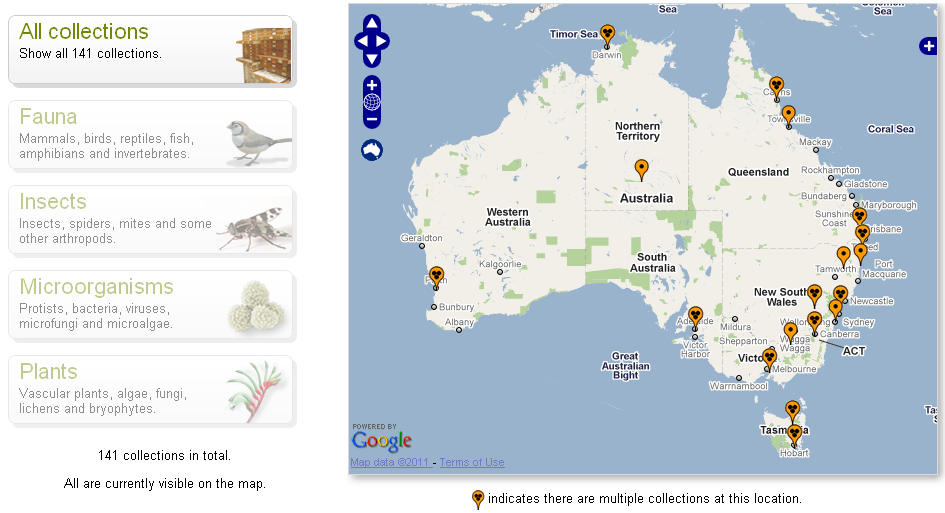By Lynne Sealie, Atlas of Living Australia
Australia’s biological collections – do they really matter or are they an interesting pursuit for people with a passion for preserving dead plants and animals?
Documented collecting in Australia began when Joseph Banks visited Australia as part of Captain Cook’s expedition in 1770. Following Banks, Australia’s scientists and natural historians built the foundations of Australia’s collections of algae, fish, insects, plants, mammals, birds, fungi and microorganisms.

The importance of biological collections to conservation is huge, particularly in Australia’s variable climate. Firstly, we need to know what species actually exist. Of Australia’s estimated 570,000 living species, three-quarters are yet to be identified and remain something of a mystery.
Coupled with needing to know what species actually exist in Australia, if we don’t know precisely where species occur, it’s impossible to monitor any changes to animal and plant life or make informed decisions about managing biodiversity and landscapes.
Saving the day
Biological collections have saved the day countless times. A fungal collection saved USA wheat exports by enabling scientists to distinguish between a harmless and a pest fungus. The strain of penicillin that spared many lives in World War Two was sourced from a fungus collection in the USA.
Hundred-year-old tuna from a museum collection have told us about levels of mercury pollution in the past. Similarly, lichens have told us about changes in air quality. Seed banks protect our food supply by allowing scientists to screen crops for varieties that are resistant to disease. Seed banks even insure important plants against catastrophes such as nuclear war.
Last year, specimens up to 160 years old held in collections at CSIRO and Australian museums allowed a tiny population of ground parrots in Western Australia to be recognised as a separate species from its slightly less endangered eastern Australian cousins. The 110 survivors of this critically endangered species can now be monitored.
Collections the key to solving frog deaths mystery

Declines in frog populations began to be observed in Australia during the 1970s but it wasn’t until the late 1990s that Australian scientists identified the cause: a fatal fungus. Described as Batrachochytrium dendrobatidis, the fungus causes the disease chytridiomycosis, a skin infection.
But was this newly-identified fungus the cause of worldwide frog declines, even in pristine habitats, or might a toxin or environmental change be responsible?
Specimens from biological collections revealed that the fungus first appeared in frog populations in Australia and the Americas immediately prior to their declines and disappearances. In Australia the epidemic began in southeast Queensland in the late 1970s, spreading north and south along the coast. Combined with evidence of chytridiomycosis causing rapid death of frogs at the time of declines in Australia and overseas, the evidence from frog specimens in biological collections has helped show the fungus is indeed to blame.
Frogs collected in 1938 in South Africa show infection with the fungus, suggesting a point of origin. Its global spread in recent decades has caused the decline or extinction of hundreds of species of frogs.
Where are the collections?
Australia’s biological collections are found in many museums, herbaria and zoos, universities, government departments and CSIRO, where they are curated and studied by dedicated scientists and taxonomists.
Across the country, millions of specimens (and bits of specimens) are pinned, dried, preserved in alcohol, preserved on slides, frozen and stored along with photographs, drawings and the records associated with each specimen. For example, The Australian National Insect Collection has more than 12 million specimens of Australian insects, mites, spiders, worms and centipedes. The Australian National Herbarium in Canberra has more than 1.4 million plant specimens, including some of Banks’ original specimens.
The Atlas of Living Australia is working in partnership with museums and herbaria to link up information and photos about specimens in collections with observation records, identification tools, mapping tools, citizen science projects, biodiversity literature, species pages and more. The ALA website highlights information about 141 Australian Natural History Collections and the specimens found within them.

Australia’s natural history collections are a vast treasure-house of specimens, documenting the country’s rich biodiversity and providing us with essential information on the characteristics, genetics, distribution and ecology of each species. The ALA provides a map and a list of these collections, along with information about each collection and an overview of the specimen data available for each collection through the Atlas.
About the Atlas
The Atlas of Living Australia is a national collaboration between CSIRO, the Australian Government and Australia’s museums, herbaria and other biological collections. The Atlas also collaborates with the Global Biodiversity Information Facility (GBIF), the Encyclopedia of Life and the Biodiversity Heritage Library.